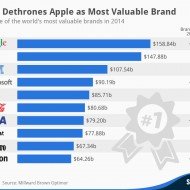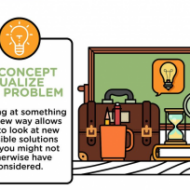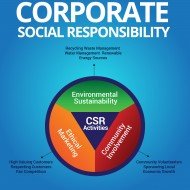Currently Browsing: CSR
Posted by Managementguru in Branding, Business Ethics, CSR
on Nov 14th, 2022 | 0 comments

Ethics is knowing the difference between what you have a right to do and what is right to do. Tell us what do you think about Elon Musk’s Business Decision? This is a classic case for an ethical debate. Tesla CEO Elon Musk has been facing criticism for his plan to charge Twitter users USD 8 a month to get or keep a verified account. pic.twitter.com/3t5ahItE5z— Elon Musk (@elonmusk) November 8, 2022 He shared a hilarious meme in which he claims, while people are happy to pay $8 for a Starbucks coffee but complain about paying for a Twitter verification tick. He then shared another photo of a $58 sweatshirt. pic.twitter.com/kGncG7Hs3M— Elon Musk (@elonmusk) November 2, 2022 Visit our Gumroad Shop where we offer great digital products that will aid you in completing your projects both at workplace and home front. Planner printables, Inspirational Quotes, Checklists for all genres, DIY Ideas, Business Ebooks and much more…Our motto is “Maximum Value at Affordable Prices.” Professional code of ethics will encompass the following IntegrityAttitudeKnowing your limitsBeing fairBeing true to yourselfLeading by exampleAlways trying your hardestSeeking constant improvementBeing open mindedBeing grateful Read on – Famous examples of Social Enterprises Business ethics is the code of conduct imposed on employees or members of certain profession. Examples include punctuality, time management, confidentiality and transparency. While personal ethics govern a person’s whole life, it might be a good place to start -since it lays the foundation that helps the individuals to project the same values into their work practices. There is a saying that inspires me to the core – “If people don’t know you for your work ethic, you ain’t working.” Integrity gives you real freedom because you have nothing to fear since you have nothing to hide. What are the differences between these three? Charity – Non profit, not generating revenue or profit Social Enterprise – A combination of business and social goals, but with emphasis on the latter. Profit is reinvested in community or company. For Profit Company – Profit maximizing company, CSR and social impact considered add-ons to the core business agenda. So, lets talk about social business. What is a Social Business? A business that is designed and created to solve a social or an environmental problemA non dividend business The 7 principles behind a social business shall be Social and environmental issue is the business objectiveFinancial and economic stabilityInvestors get back their investment amount onlyOnce investments are paid back, the profits are reinvested for expansionEnvironmentally consciousWorkforce gets market wage with better working conditionsDoing it with joy Let’s find out how to create an ethical framework Define your core values early onIntegrate ethics in your hiring processLead by exampleCreate a culture of openness and welcome dissentCraft values everyone can ownLearn from immediate peers or distant modelsRemember that institutional character is fragileKnow your limits as a leaderEstablish an independent board Now brands talk so much about sustainability and being eco friendly. While it is manadatory for us to recycle the resources for the well being of forthcoming generations and to reduce pollution, how many businesses are truly satisfying their social reponsibilty is a million dollar question. Shop Local I personally feel “supporting local small businesses” is a genuine and direct way of contributing to the society as a responsible individual. 7 Reasons To Shop Local And Support Small Businesses – This is a great read as to why you should consider shopping local instead of big chain...

Posted by Managementguru in Business Ethics, Business Management, CSR, Principles of Management
on Jan 26th, 2021 | 0 comments

Gone are the days businesses could simply dispose of their waste without giving it much thought. Nowadays, with the focus firmly on the environmental impact waste is having, businesses have to consider what they can do to reduce the damage they are doing to the planet. So what can businesses do? Here are a few things to think about. Reduce The first thing a business can take a look at is if there are any ways to reduce the amount of waste created in the first place. One thing they can do is check out exactly what’s going in the trash and consider if there are reusable or waste-free solutions. If you have a water cooler for example, get rid of disposable cups and encourage employees to use reusable cups and water bottles. It’s small changes like this that can make a big difference. With advancements to modern technology and business software options, there’s never been a better time for switching to a paperless office. Digitizing documents and using cloud-based storage can not only help reduce your carbon footprint but it can also help reduce a business’s bottom line by reducing paper, printing, and storage costs. You can get more ideas for reducing your waste here. Reuse The next step towards a greener business is to reuse. Can you save packing boxes and use them for your own shipping? How about replacing single-use pens or printer cartridges with refillable alternatives? Again, the solutions which work for you will depend on your individual company and your current business practices, but moving to reusable could save your business money in the long run. Take a look around, and you might find lots of ways to go reusable at work. Recycle While recycling has numerous benefits both for business and the environment, in the US, there are no national laws making recycling of any kind of material mandatory. So to find out what your legal responsibilities are, you will need to check local and state government requirements when it comes to recycling. But don’t let that stop you from reducing your trash. There are many materials that can be recycled and many reasons to do it. If you still need persuading, it’s worth knowing that not only is it the right thing to do environmentally, but as recyclables become a more valuable commodity, the more opportunities arise to actually sell your waste. If your company produces a lot of recyclable waste, it might be worth investing in machinery which can help deal with the materials more cleanly and efficiently, such as balers, conveyors and shredders. Materials such as cardboard, textiles, foam, plastics, cans, and bottles can be compressed in balers and then baled for transport to a recycling facility. There’s lots of information at balingwiredirect.com about baling machines and the equipment needed to run them. You’ll also find some blogs about the types of material you can recycle. With innovation, smart thinking, and growing demand for eco-friendly products, the recycling industry is expanding and diversifying. Waste Advantage Magazine have reported on the top 15 recycling industries, but there are many more besides these. Perhaps you can use these industries and the examples above to transform your business into a greener...

Posted by Managementguru in Business Ethics, Change management, CSR, Marketing
on Jan 11th, 2015 | 0 comments

Consumer Loyalty Is Driven By ‘#Trust’ One of my most favorite things to say is that people hire brands that they know, like, and trust. Think about it. How do you feel about your insurance man, or the guy who sold you your last car? In all of our lives, there is a salesman that we feel connected to, or a brand that is familiar to us. Making a purchase isn’t just something that we do, it is something that we experience. Managing Brand Equity: Capitalizing on the Value of a Brand Name When it comes to business and sales, we start to look at things from a different perspective. How do we get our customers to know, like, and trust us? In a recent report, Havas Media ranked the world’s most meaningful brands. Topping the list were companies like IKEA, Google, #Nestle, Danone, Leroy-Merlin, Samsung, Microsoft, Sony, and Unilever. Major brands to be sure, but what is it exactly that makes them so meaningful? Which brands ranked the highest? Ikea Google Nestle Danone Leroy-Merlin Samsung Microsoft Sony Unilever Bimbo Garrett Moon 90% of Americans more likely to trust brands that back #social causes If your brand doesn’t support social causes, it’s missing out on a huge audience. Consumers don’t just like when companies incorporate social good into their business models — they’ve come to expect it, whether it’s through #corporate social responsibility (CSR), cause marketing or “good” content. In fact, 90% of Americans say they’re more likely to trust and stay loyal to companies that actively try to make a difference. #Customer Loyalty: How to Earn It, How to Keep It Studies also show that 88% of consumers would buy a product with a social or environmental benefit, and a surprising 84% would tell friends and family about a company’s CSR efforts. Brands can tap into this consumer base through original content and social media. After all, 64% of millennials use social media to address companies about social and environmental issues, and 36% of consumers say they mainly share content to promote the causes they care about. But your company needs to be genuine. Don’t underestimate your consumers’ intelligence by simply jumping on this bandwagon. “Causewashing” is a serious issue, and odds are your consumers will smell it a mile away. Matt Petronzio Google Beats Apple Apple is out, Google is in. Google has usurped Apple—leader for three years in a row—on the 2014 BrandZ Top 100 Most Valuable Global Brand ranking, out today. It has grown 40 percent since last year and has a #brand value of $159 billion. So why and how did Google bump Apple? “It’s a story about two hugely #successful technology companies,” said Oscar Yuan, VP at Millward Brown Optimor. “Apple’s been known for earth-shattering, category-creating, revolutionary products. And I would say just recently Apple’s innovations have been more evolutionary than revolutionary. I think that may have played a little bit in the drop from first to second,” he said. “Google has been doing just the opposite—they’ve been organizing the world’s information and putting it at your fingertips. Even to things as aggressive as GoogleX—they are making WiFi available globally by putting satellites tied to balloons over the earth. [That kind of innovation] does enormous things for the brand—it’s seen as a making-dreams-come-true-type company, and that certainly helps their brand value,” Yuan said. Jennifer Rooney Related Posts: CSR How to Build Brand Value of Businesses? Does Your Company Have What it Takes to be a...

Posted by Managementguru in Business Ethics, CSR, Marketing, Strategy
on Jan 9th, 2015 | 0 comments

Strategic Change-Beyond the Boxes The major focus of corporate strategy is to formulate a method by which any business can adapt to a changing environment enabling to improve its competitive advantage. The corporate strategy theory presents us with the following questions: Where are we now? Where do we want to be? How do we get there? Corporate Self-Analysis The logic is to examine the current status of the business. Areas that come under this self-analysis purview include: Is the business aware of who its stake-holders are? If you are not going to engage your customers or users, then your business becomes product-centric and not cutomer-centric. What are the long-term objectives of your concern? Without a definitive vision how will you ever design and achieve your short-term goals! Does your company have a mission statement? See the mission statement of Mc.Donalds – McDonald’s brand mission is to be our customers’ favorite place and way to eat and drink. Our worldwide operations are aligned around a global strategy called the Plan to Win, which center on an exceptional customer experience – People, Products, Place, Price and Promotion. What are your present business strategies? If your company’s presence is not felt in the market (forget being a market leader always, though that would be the dream spot of all big corporate companies), or your product is not selling by itself, then there has some serious thinking to be done about your present strategies. Focus on what went wrong, try to get inspired by your competitors’ moves (Ha! Its not copying my friend! ), gear up your advertising department to reach the audience. Also try to find out if there are any black sheep in your stay leaking confidential statistics and strategic business moves. Are they simple to understand and communicate to the workforce? If you are not able to pitch your idea to your workforce in a matter of just 15 minutes, then it is very well clear that you are not clear about what you’ve conceptualized. What is the marketplace scenario? Is it in the growth/decline phase? Sometimes it is better to start a business at bad times. Hiring will be easy, cost will be under control and you can experiment boldly because you have nothing to lose. Who might be your biggest competitors? This takes serious effort and planning and ask your core team to do their home-work properly. “Understand that a competitor is created because you are weak”. Review your business internally, look at your business-does it support growth and adaptability to change? This depends upon the leader who serves as the biggest inspiration for people down the line. The culture he has developed plays a big role in deciding this aspect wherein flexibility and employee engagement are part and parcel of it. How effective are your production processes? How well do sales/personnel/marketing/finance sections perform? How well does the business control its internal resources? This is a separate entity and the most crucial element of an enterprise. Expansion in accordance with the demand on one side and keeping up with the technology advance on the other side and what about the third side – the “WORKFORCE” in caps! Tending to the employee morale is the biggest challenge of modern times. HR MANAGERS have to have up-to-date knowledge on the labor laws and government policies on the security aspects of employees. A small case study on the Fast Food Giant McDonalds: U.S. CMO Deborah Wahl, who joined the fast food giant McDonalds company in early 2014, said in a video about the brand refresh that the company will move from a philosophy of “billions served” —...

Posted by Managementguru in Business Management, CSR, Entrepreneurship, Human Resource, Leadership, Strategy
on Dec 4th, 2014 | 0 comments

Does Your Company Have What It Takes to be A Leader? Corporations that are considered leaders in terms of business performance take a common approach to CSR. The blueprint for how corporations can maximize their investments in CSR contain five essential ingredients- Business-based social purposeClear theory of changeQuality and depth of informationConcentrated effort, andPartnering with experts. 1. Business-based social purpose: There have been too many examples of CSR programs that ignore business fundamentals. Leadership-level CSR programs always directly reflect what the business is and what it does. An “innovative CSR initiative” can emphasize the company’s business purpose and flawlessly leverage its operational competencies. The social purpose of a business is aligned with and supports social issues in a way that is consistent with the unique culture and character of the business. Srinivasan Services Trust is a social arm of Sundaram Clayton Limited and TVS Motor company established in 1996 for charitable purposes. The company focuses on improving health, education, women’s empowerment, infrastructure and environment that would bring about changes in the lives of people in a community. 2. Clear theory of change: CSR is becoming indispensable. On the one hand, that’s good news because it proves its business value. On the other hand, it’s getting harder to discriminate one company’s efforts from another’s. CSR leaders develop branded approaches to drive measurable social change. Starbucks Coffee has 8,000 stores, in 34 countries that sell to 30 million customers each week has adopted an unique CSR approach. Their mission is to provide the highest quality coffee in an environment that is consistent worldwide and support the sustainability of their farmers. Starbucks could be considered compliant and even proactive in their responsibilities to stakeholders. They purchase coffee in 20-30 countries per year, as their buying agents spend 240/365 days per year on the road searching for the best coffee farms and developing relationships with customers. It involves mutually agreed upon fair pricing, economic transparency, socially responsible buying, and environmentally friendly expectations. These standards protect the farmer’s business and ensure that Starbucks can support their ethical branding with practices that respect the environment. 3. Quality and Depth of Information: Merely pin-pointing social priorities for community investment is not adequate. Leadership comes from providing employees, customers and external stakeholders with a significant depth of information about the social issue through authentic research, white papers, videos, stories, social media, and so on. Bill & Melinda Gates Foundation or the Gates Foundation is one of the largest private foundations in the world, founded by Bill and Melinda Gates. It was launched in 2000 and is said to be the largest transparently operated private foundation in the world. Guided by the belief that ‘all lives have equal value’, Bill Gates and his wife Melinda Gates the co-chairs explain about their work and their commitment in supporting the government in reaching India’s most vulnerable communities with the services they need to live healthy and productive lives. The Department of Biotechnology (DBT) under the Ministry of Science and Technology of the Government of India and the Bill & Melinda Gates Foundation in collaboration with India’s Biotechnology Industry Research Assistance Council (BIRAC) launched a call for proposals as part of Grand Challenges India to reinvent the toilet. The Department of Biotechnology and the Gates Foundation will each invest US$1 million to support Indian investigators to drive research, development, and production of the “next generation toilet.” 4. Concentrated effort: Leadership is shown by corporations that direct their efforts on one social issue and align all their internal and external resources with this issue. 5. Partnering With Experts: Leadership entails showing a high degree of credibility. This is best done through relationships with social issue experts and not-for-profit organizations. Starbucks hosted...










